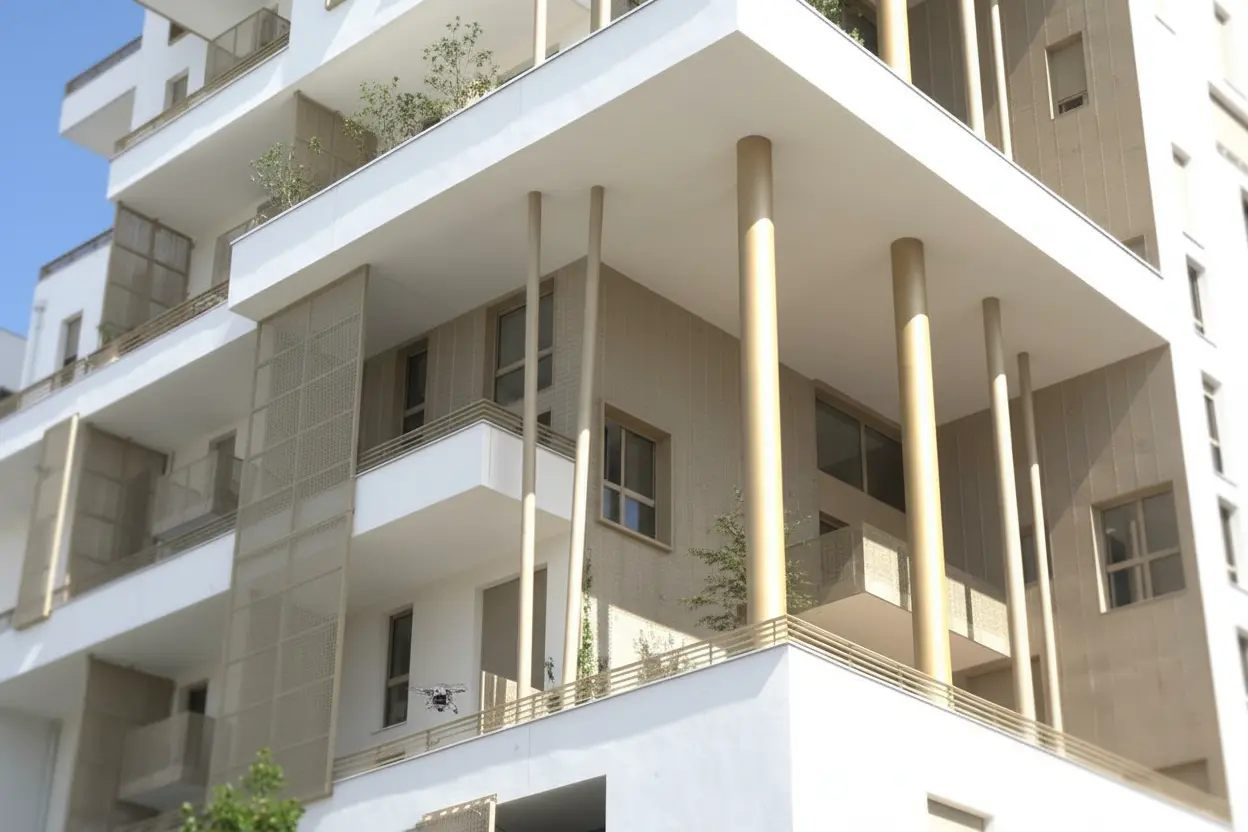Peek out your window and imagine: In 2049, you might be living in a home that’s smart, shared, and downright rebellious (in a good way). We’re not talking sci-fi here—these changes are already on architects’ drawing boards. Welcome to the future of living spaces, where design and lifestyle go hand in hand, the walls adapt, and even the thermostat has a mind of its own.
From Breezy Loggias to Smart Towers: Designing for Well-being
- Imagine the angular loggias of the Emblematik tower in Aubervilliers, crafted by Castro and Denissof: lush communal gardens that also act as thermal regulators, keeping the building (and its inhabitants) cool.
- These aren’t just perks—they’re a blueprint for how living spaces can double up on comfort and sustainability.
The future home draws its strength from clean materials and smart devices. Modular living, welcoming several generations and myriad activities under one roof, is no longer a far-fetched dream. This was precisely the subject contoured at the seventh « Rencontres 2049 » hosted at the Pavillon de l’Arsenal in Paris, where architects, engineers, entrepreneurs, and home automation experts gave housing a reboot worthy of the twenty-first century’s approaching midpoint.
Materials and Automation: Stronger, Greener, Smarter
Technological advances won’t just jazz up the infrastructure. Timothée Boitouzet, a materials engineer and chemist, notes that 75% of the buildings that’ll exist in 2049 are already planted in city soil. But here’s the twist: the city—where 75% of humanity will be living in 2049—will hinge on new materials and new techniques.
Boitouzet’s company, Woodoo, has invented an innovative wood: by extracting the natural glue called lignin and replacing it with a super-polymer, this “reinforced wood” becomes as strong as concrete—with only a third of the carbon footprint. Picture wooden skyscrapers that save the world’s dwindling sand and water reserves from the clutches of concrete. At present, this material is used mainly in car interiors, but the future looks up (and up… and up) for wood-based cityscapes.
The heartbeat of tomorrow’s habitat will also be automation. Frédéric Potter, founder of Netatmo, champions connected devices and says that energy efficiency, comfort, and security will ride in on the coattails of the Internet of Things. No more sweltering in overheated apartments with only one solution—cracking the window. Collective heating with fixed radiators is no longer viable when 40% of greenhouse gas emissions stem from heating buildings.
Living Together: Demographics, Flexibility, and the Art of Sharing
But the transformation of living spaces isn’t just about the nuts and bolts—it’s about how we live and who we live with. Changing demographics, with four or five generations side by side and extended periods of study, upend the conventional home. With more separations and blended families, residents are seeking new ways to organize their nests.
Guillaume Pasquier, of La Française, suggests “flexi-ownership”: become the owner of a new property at 30% to 40% less, but for a limited time—fifty years max. During that window, you can live in, rent, or sell it for the remaining years on your contract, always with the possibility that it’ll be bought back at a predetermined price. Flexibility, meet stability.
Urbanist Benjamin Aubry, founder of start-up Iudo, works on cohabitation across generations through “self-promotion in real estate.” When the kids move out (and over half of house owners are over 55), why waste empty rooms? Transform them into student housing, an office, or miniature apartments. This not only densifies districts while keeping historical styles intact, but also avoids nibbling away at city edges. Thus emerge new collaborative suburbs where activities and generations mingle, echoing the 1930s, when sociologist Monique Eleb reminds us that buildings blended shops, offices, apartments, and even rooftop houses. The future, it seems, sometimes dusts off the past—just with smarter plumbing.
Personalization, Social Savvy, and Cheeky Transgression
Modern living demands that more things happen not just under the same roof, but in the same apartment. Architect Sophie Delhay envisions apartments as little societies unto themselves, spaces of about 14 square meters each, which residents can connect (or not) as they wish. It’s all about giving meaning to every square meter, letting a father redesign his living room to create a special space to share with his daughter—because, really, isn’t escaping together while staying at home the ultimate future fantasy?
Yet for all this innovation, the arch-nemesis remains the car. « Starting a building with the basement is letting a parking space dictate everything, » sighs Delhay. Blame the car for dull modern layouts.
Sociologist Monique Eleb notes society often lags behind the bold proposals of architects, who must “transgress” old codes to move forward.
Transgression is the guiding star for Patrick Bouchain, an architect and scenographer dedicated to democratizing urbanism. He insists the first duty of a happy city is “to house and feed everyone, keeping the working population in its midst.” For Bouchain, 2049 housing must rethink social housing—make ownership more accessible, and before building anything new, focus on “repairing, maintaining, and supporting.”
The bottom line? The homes of 2049 won’t just look different—they’ll think different, host different, and nourish a more collaborative, sustainable city life. Maybe it’s time to start looking at your living room as a garden, a classroom, a workshop, and, occasionally, a place to binge-watch futuristic documentaries. The future? It starts at home.

John is a curious mind who loves to write about diverse topics. Passionate about sharing his thoughts and perspectives, he enjoys sparking conversations and encouraging discovery. For him, every subject is an invitation to discuss and learn.






